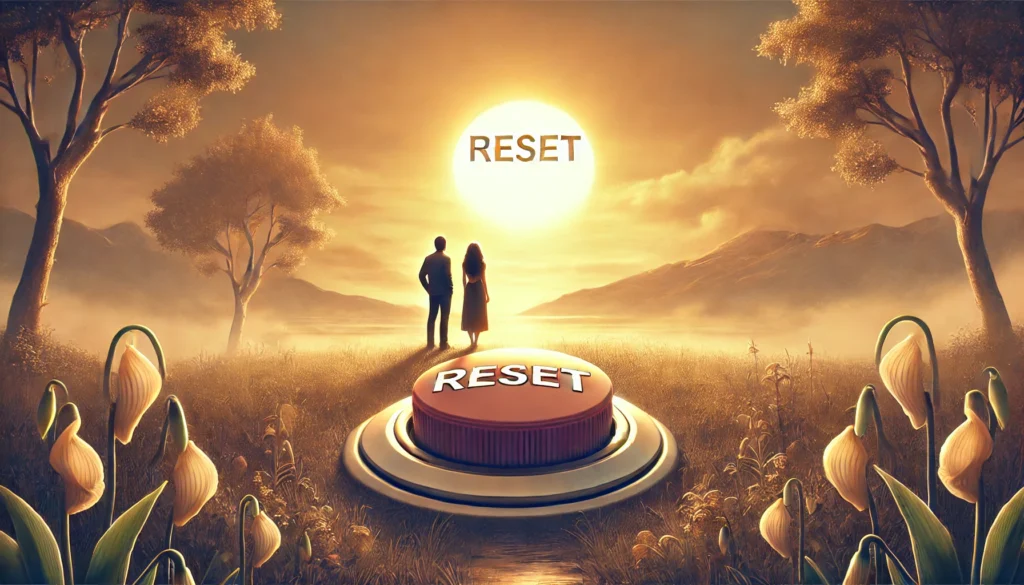
Understanding the Need for a Reset
Relationships, whether romantic, familial, or platonic, can experience periods of strain and disconnect. There are several common reasons why a relationship may necessitate a reset. One of the most frequent issues is miscommunication. When partners fail to effectively express their thoughts and feelings, misunderstandings can arise, leading to frustration and resentment. This miscommunication can create an emotional barrier that prevents meaningful interactions and diminishes the connection that once existed.
Another significant factor contributing to the need for a relationship reset is the loss of connection between individuals. Over time, partners may find themselves drifting apart due to busy lifestyles, personal challenges, or a lack of shared experiences. The emotional distance that develops can manifest as indifference or decreased intimacy, leaving one or both parties feeling neglected and unappreciated. Recognizing this emotional detachment is crucial, as it often signals that the relationship requires renewed attention and effort.
External stressors can also weigh heavily on a relationship. Factors such as work-related stress, financial difficulties, or family obligations can create pressure that affects the dynamics between partners. This external influence may lead to recurring conflicts or heightened sensitivity to each other’s behaviors, making it essential to identify and address these stressors. Awareness of such challenges is vital for partners looking to restore their connection.
There are clear signs indicating that a relationship needs a fresh start. Frequent arguments, lingering tension, and unresolved disputes all point to underlying issues that deserve attention. By recognizing these signs, partners can take the initial step toward rejuvenating their relationship. The journey to repair a strained connection begins with acknowledging the need for a reset and committing to constructive dialogue and mutual understanding.

Steps to Initiate the Reset Process
Initiating a reset in a relationship requires intentional effort and a commitment to fostering a healthier dynamic. The first step is engaging in open and honest communication about feelings and concerns. It is vital for both partners to share their perspectives without fear of judgment, allowing for a deeper understanding of each other’s emotional states. This dialogue forms the foundation for rebuilding trust and connection.
Once both partners feel heard, the next step involves setting mutual goals for the relationship. Discussing what each individual desires from the partnership enables couples to align their visions for the future. Establishing shared aspirations can help create a sense of teamwork and mutual support while focusing on the path ahead.
Creating a safe space for dialogue is equally important. Both partners should feel comfortable expressing their thoughts and emotions. This may involve setting aside specific times for discussions, ensuring that distractions are minimized, and actively listening to one another. Addressing grievances is an essential part of this process. Identifying and acknowledging past grievances can help couples understand the root causes of their challenges and foster an environment of healing.
Moreover, engaging in activities that foster connection can rekindle the bond that may have dwindled over time. Whether through shared hobbies, date nights, or exploring new interests together, these experiences can enhance emotional intimacy. If needed, couples should not hesitate to seek professional guidance, which can provide valuable tools and perspectives to aid in the reset.
Practicing forgiveness and letting go of the past is crucial for moving forward. Both partners must be committed to releasing old wounds to build a healthier relationship. Implementing regular check-ins to assess progress allows couples to stay on track, offering a structured approach to monitoring their growth.
Lastly, building emotional resilience together and reinforcing shared goals and aspirations for the future will fortify the relationship against future challenges. By approaching these steps with dedication and openness, couples can successfully navigate the complexities of resetting their relationship.
Effective Communication Techniques for a Fresh Start
Effective communication is essential for resetting a relationship, as it lays the foundation for understanding and connection. One pivotal technique is active listening, which involves fully focusing on what the other person is saying without distractions. This method fosters an environment where both partners feel heard and respected. Validating each other’s feelings amplifies this effect, as acknowledging emotions signals empathy and consideration. By doing so, partners can create a safe space that encourages openness.
Utilizing “I” statements to express personal feelings is another powerful approach. Phrasing sentiments around one’s experiences helps convey emotions without assigning blame, thereby reducing defensiveness. For instance, saying “I feel overlooked when you interrupt me” communicates personal feelings rather than accusing the other person, fostering more productive dialogue.
Practicing empathy involves striving to understand the partner’s perspective. This technique encourages individuals to step into each other’s shoes, strengthening relational bonds by nurturing compassion and understanding. Additionally, selecting the appropriate time to discuss sensitive topics ensures that both partners are mentally ready, which can significantly influence the discussion’s outcome.
During discussions, maintaining a calm and composed demeanor is crucial. This promotes a conducive atmosphere for effective communication. Summarizing and reflecting on what has been said allows partners to verify understanding, reducing potential miscommunications. Moreover, it is essential to avoid interruptive behavior, as this can hinder the free flow of ideas and emotions.
Engaging in positive reinforcement and appreciation can enhance relationship dynamics. Acknowledging each other’s efforts fosters goodwill and encourages continued positive interactions. Furthermore, being open to feedback and making adjustments demonstrates flexibility and a commitment to improvement. Establishing clear boundaries is equally significant, as it facilitates healthy conversations and prevents misunderstandings, ultimately leading to a more harmonious reset in the relationship.
Nurturing the Relationship After the Reset
After a relationship reset, it is essential to nurture the positive changes achieved to ensure they become lasting elements within the partnership. One effective strategy is to schedule regular couple time. Setting specific times, free from distractions, allows both partners to reconnect and focus on each other, reinforcing their bond. This dedicated time can be used for various activities, from date nights to simple walks, enhancing intimacy and understanding.
Another important aspect is the continuous practice of gratitude and appreciation. Regularly expressing thanks for the little things your partner does fosters a positive environment and encourages more of such behavior. This practice not only enhances emotional connections but also reduces resentment and misunderstandings over time.
Setting and revisiting shared goals is crucial for alignment within the relationship. Discussing aspirations, be they short-term or long-term, ensures both partners are moving in the same direction and feel equally invested in their journey together. Regular discussions can help both partners adjust their goals as needed, reflecting any changes in their lives and priorities.
Maintaining open lines of communication is vital for sustaining the reset. Partners should feel comfortable discussing their feelings and concerns without fear of judgment. Open, honest, and respectful dialogue strengthens trust and conflict-resolution skills, which are critical components of a healthy relationship.
Engaging in periodic relationship check-ups can be beneficial to assess the partnership’s health and identify any areas needing attention. During such evaluations, celebrating small victories together fosters a sense of accomplishment while reinforcing the positive aspects of the relationship.
Staying adaptable to life’s changes ensures resilience in the partnership. Life can be unpredictable, and remaining flexible allows both partners to navigate challenges together. Prioritizing self-care, both individually and as a couple, is also essential for maintaining emotional and physical well-being.
Lastly, investing in new experiences together keeps the relationship dynamic and exciting. Engaging in activities outside the norm can rejuvenate the bond and encourage ongoing personal growth for both partners. By committing to this continuous development, a couple can cultivate a nurturing environment that fosters lasting love and connection.
